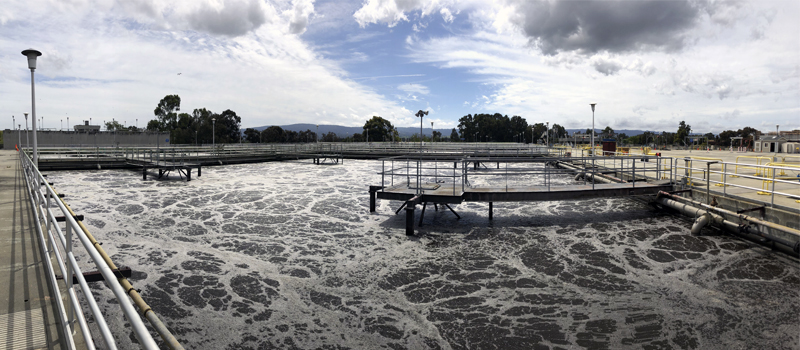
Palo Alto WRRF
The City of Palo Alto celebrated the opening of its $30 million sewage sludge processing facility funded by State Water Board loans and designed to dramatically reduce greenhouse gas emissions, eliminate a hazardous waste stream and reduce energy costs.
The Sludge Dewatering and Loadout Facility project, which is part of the City’s Regional Water Quality Control Plant (RWQCP), replaces an incinerator that has been in operation since 1972.
“As California adapts to our changing climate, we need more green projects like the City of Palo Alto’s that provide multiple benefits like reducing greenhouse gas emissions and energy use while making available a useful biosolids soil product,“ said State Water Resources Control Board member Sean Maguire.
The project was funded in large part by the State Water Resources Control Board’s Clean Water State Revolving Fund. The city received approximately $26 million in low-interest loan funds and $4 million in principal forgiveness funds because the project met the Green Project Reserve requirements of the U.S. Environmental Protection Agency. The loan will be repaid by RWQCP’s partner agencies over 30 years.
The project will allow the city to shut down the antiquated and energy-intensive incinerator, providing a significant reduction in energy use and eliminating 700 tons per year of incinerator ash, a hazardous waste. The new sludge dewatering process will reduce climate-warming greenhouse gas emissions by approximately 15,000 metric tons of carbon dioxide per year – the equivalent of removing 3,000 passenger cars. The dewatered sludge is ultimately converted for use as an agricultural soil supplement.
The project highlights the teamwork between the board’s Clean Water State Revolving Fund program and its funding recipients on projects that are helping to address the causes of climate change.
The project, which began construction in March 2017, includes a 10,000-square-foot building to accommodate all equipment and controls necessary to dewater and process the sludge, a truck loading facility, miscellaneous support areas, and an odor control system.